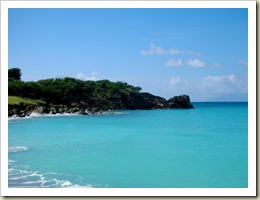Antigua Island
 The Antigua island is one of the two main island which comprise the country of Antigua and Barbuda, located in the region of the Caribbean. The meaning of Antigua in Spanish is “ancient” and the name was given by Christopher Columbus. The island has a population of 85,632 people and the largest city is St. John’s, where more than 31,000 people can be found.
The Antigua island is one of the two main island which comprise the country of Antigua and Barbuda, located in the region of the Caribbean. The meaning of Antigua in Spanish is “ancient” and the name was given by Christopher Columbus. The island has a population of 85,632 people and the largest city is St. John’s, where more than 31,000 people can be found.
The Antigua island is part of the Leeward Islands and it has a surface area of 281 sq. km. (108 sq. miles). The island’s highest point is Mount Obama, with a height of 402m.
The country’s capital, St. John’s, can be found in the NW part of the island, in the vicinity of the VC Bird International Airport. The city has its own harbour, which is able to accommodate big cruise ships that might be visiting. Two other settlements from the island are All Saints, which has a population of 3412 and Liberta, which has a population of 2239.
The economy of the island of Antigua is mainly based on tourism and it’s considered a very luxurious travel destination. Many of the large airlines of the world visit the island of Antigua and its main airport, VC Bird Airport.
Antigua’s Early History
Before the arrival of the colonists from Europe, the island of Antigua was inhabited by Ciboney Indians initially, though they left after a couple of thousand years of inhabiting it. Arawak Indians took their place and after them came the Caribs. After the Caribs, the Europeans took over the island. Christophor Columbus was the first to came to Antigua from Europe, in 1493, on the second voyage he did. For the next 150 years, not much happened, as colonisation wasn’t possible because of the Caribs.
The first major group of colonists from England came in 1632 and they established the island’s first European settlement. The island soon became a successful sugar colony, helped by the fact that it can be found on the major sailing routes.